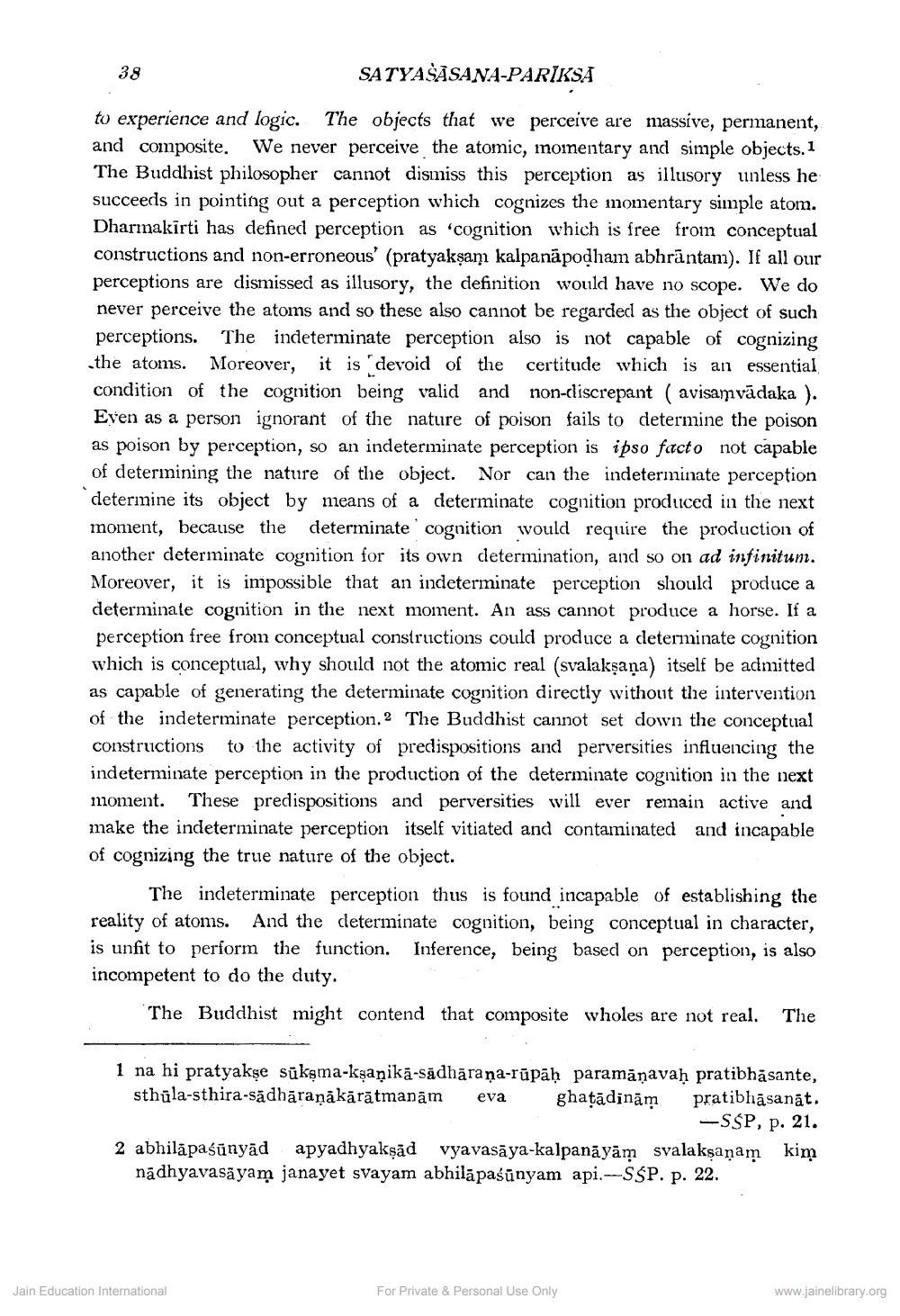________________
SATYASASANA-PARĪKSĀ
to experience and logic. The objects that we perceive are massive, permanent, and composite. We never perceive the atomic, momentary and simple objects. 1 The Buddhist philosopher cannot dismiss this perception as illusory unless he succeeds in pointing out a perception which cognizes the momentary simple atom. Dharmakirti has defined perception as 'cognition which is free from conceptual constructions and non-erroneous' (pratyakṣam kalpanapodham abhrāntam). If all our perceptions are dismissed as illusory, the definition would have no scope. We do never perceive the atoms and so these also cannot be regarded as the object of such perceptions. The indeterminate perception also is not capable of cognizing the atoms. Moreover, it is devoid of the certitude which is an essential condition of the cognition being valid and non-discrepant (avisamvadaka ). Even as a person ignorant of the nature of poison fails to determine the poison as poison by perception, so an indeterminate perception is ipso facto not capable of determining the nature of the object. Nor can the indeterminate perception determine its object by means of a determinate cognition produced in the next moment, because the determinate cognition would require the production of another determinate cognition for its own determination, and so on ad infinitum. Moreover, it is impossible that an indeterminate perception should produce a determinate cognition in the next moment. An ass cannot produce a horse. If a perception free from conceptual constructions could produce a determinate cognition which is conceptual, why should not the atomic real (svalakṣaṇa) itself be admitted as capable of generating the determinate cognition directly without the intervention of the indeterminate perception. 2 The Buddhist cannot set down the conceptual constructions to the activity of predispositions and perversities influencing the indeterminate perception in the production of the determinate cognition in the next moment. These predispositions and perversities will ever remain active and make the indeterminate perception itself vitiated and contaminated and incapable of cognizing the true nature of the object.
38
The indeterminate perception thus is found incapable of establishing the reality of atoms. And the determinate cognition, being conceptual in character, is unfit to perform the function. Inference, being based on perception, is also incompetent to do the duty.
The Buddhist might contend that composite wholes are not real.
1 na hi pratyakse sükṣma-kṣaṇika-sadhāraṇa-rūpāḥ paramāṇavaḥ pratibhāsante, eva ghaṭādinām pratibhāsanāt. -SSP, p. 21.
2 abhilapaśünyad apyadhyakṣād vyavasaya-kalpanāyām svalakṣaṇam kim nādhyavasayam janayet svayam abhilapaśünyam api.-SSP. p. 22.
sthula-sthira-sadhāraṇākārātmanām
Jain Education International
The
For Private & Personal Use Only
www.jainelibrary.org




